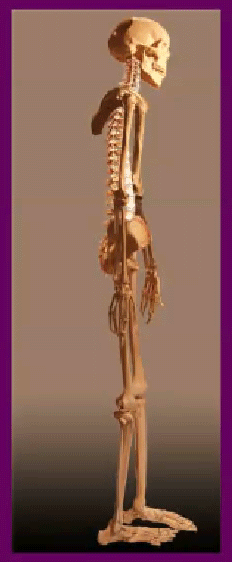The heel is not a flat surface. It has a pivot point a little bit towards the medial side of the heel from which we can rock...front-to-back, inside-to-outside. This pivot point is ultra-important in uprighting. When we allow ourselves to fall straight down through the center of the talus , the ankle flexes, and the heel rocks on this pivot point medially and slightly forward. This drops our body a little bit in space and directs it towards the strong part of the foot. As this happens, our ground contact at the heel shifts medially. Sensitivity to this shift is what enables us to stop dropping and start lifting.
, the ankle flexes, and the heel rocks on this pivot point medially and slightly forward. This drops our body a little bit in space and directs it towards the strong part of the foot. As this happens, our ground contact at the heel shifts medially. Sensitivity to this shift is what enables us to stop dropping and start lifting.
This is the central transaction of innate standing. Using leverage points directly underneath the center of each leg allows us to transform the power of our body weight with optimal efficiency. Ideally, we'd like to be able to develop the sensitivity to stop our dropping-medially-off-the-pivot-point-on-the-heel as close to the pivot point as possible. Our body weight generates substantial force. We only need to fall a tiny bit to capture the power needed to lift ourselves up. Moreover, by stopping our flexing quickly, we keep ourselves from falling very far and, thus, we don't have far to lift. The power of our weight feeds plantar muscles and our deep leg and spinal extensors -- which lift the entire body segment-by-segment and, in the process, rock the heels back and up again onto the pivot points. As soon as we are completely extended, we flex/fall again. This is the uprighting cycle. It is a rapid process.
